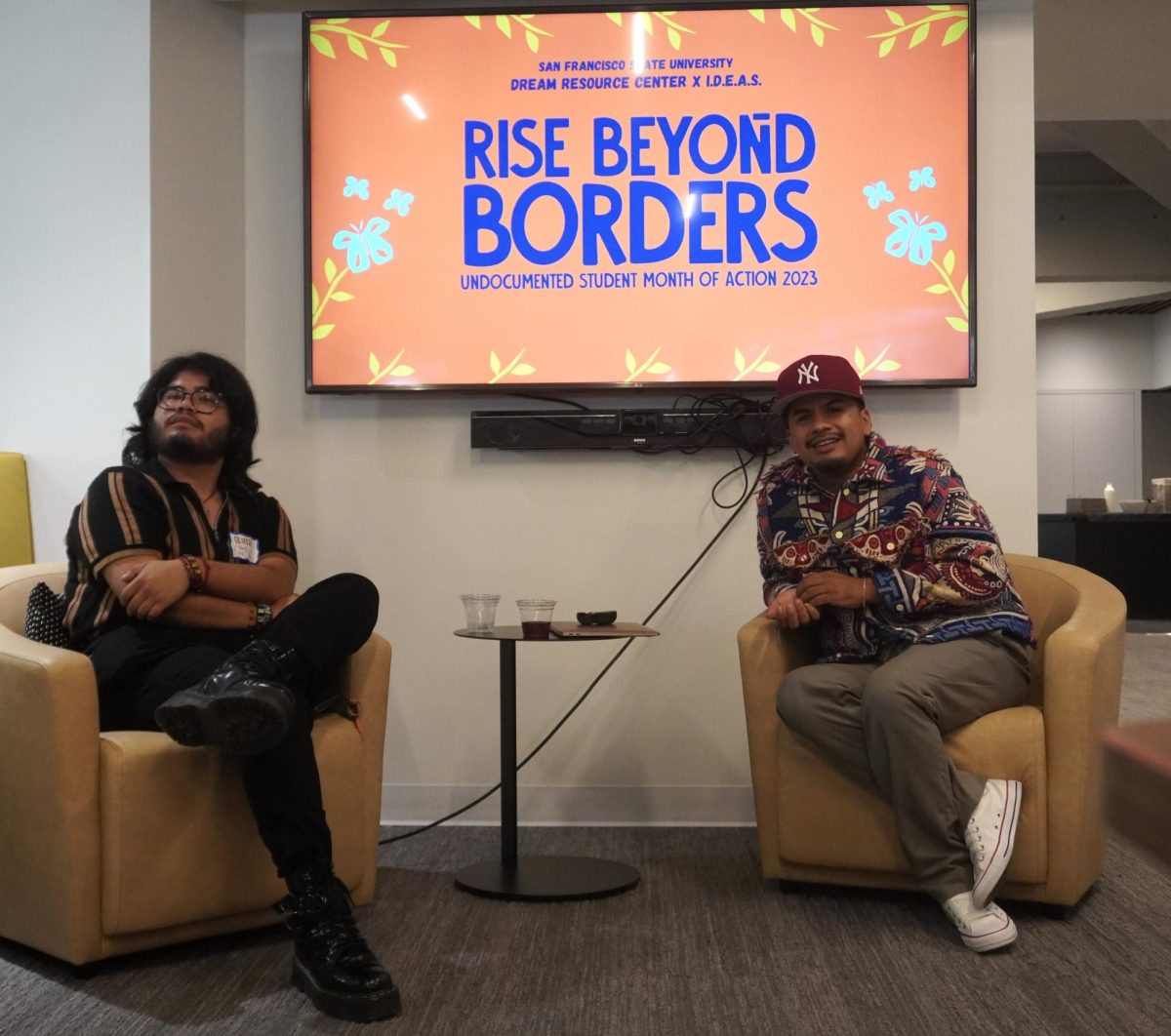By Oscar Gutierrez
A mirror shows the reflection of Jay Garcia as they get ready for another day of work. Amongst a closet of dresses, suits and ties, Garcia decides on a bright red collared silk shirt and denim pants. To complete the look, they wear a binder to press their breasts down to make them less visual. This is a daily routine for Garcia. Some days they decide on more feminine clothing and other days they may decide to mix feminine and masculine apparel. Garcia is gender fluid, a title that refers to people who switch amongst many gender identities, not just male and female.
“It was difficult growing up and knowing that I did not fall in the ‘either, or’” Garcia said. “It was one of the most comforting things when I learned that I did not have to fall into either and there was a community to support me.”
Gender fluidity has recently received attention because of people like actress Ruby Rose, who came into the public eye with her visual androgyny that challenged the aesthetic aspects of gender. Rose identifies as gender fluid, but according to Garcia, there is still work to do in recognizing people that are gender fluid. Currently, articles discussing the topic have been met with a mix of comments specifically discussing that children and youth are not at a mature enough age to know what gender they fit into, while supporters of gender fluidity have claimed that as children and youth, parents should give the flexibility to switch amongst genders to express themselves fully.
“It is wonderful to have people representing gender fluidity, both in what they wear and how they may perform identity through types of jobs and daily interactions,” said Vida Bonilla, a volunteer at the Lavender Youth Recreation & Information Center. “We need to realize that many people deal with not wanting to fit within the one single gender and don’t visually represent it for a multitude of factors.”
LYRIC is an organization helping people, specifically San Francisco youth, with expressing their identity freely. According to Bonilla, culture and religion are two major factors in the failure to present oneself in their true identity.
Garcia mentioned that before they began presenting themselves in multiple genders and changing their gender pronouns to “they, them and their” it took about 11 years from when they found a name for the identity to when they actually started presenting themselves in androgynous clothing. Garcia attributes this delay to the strong Mexican and catholic beliefs that were strongly held in the family.
“Jay had no way of explaining it because there was hardly any resources for them to explain what was happening with them,” said Bertha Garcia, mother of Jay Garcia. “Yes, I still hold my beliefs strongly, but within my beliefs is also always being there for my child and supporting them in any way possible.”
Although conversations on gender fluidity are beginning to gain traction, the amount of research and data documenting those who identify solely as gender fluid is close to non-existent. Many times, gender fluid people are treated within the category of transgender or queer people, and although they may fall under the categories, the development of these resources such as support centers and reference materials for parents and children have mostly come from things like online forums and discussions amongst gender fluid people in spaces such as LYRIC and other LGBTQ centers in the city of San Francisco.
“I wish there were more things for us to look at and feel like we were being represented, but I know that’s a process and there is progress with more of the conversations we have,” Garcia said. “We need to recognize the amount of problems that youth who are questioning their gender have from depression to suicides, but I feel that is part of my purpose, to educate.”







